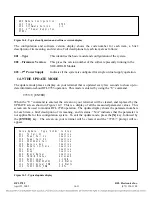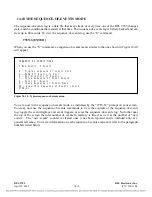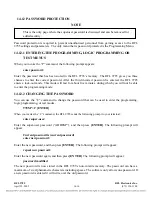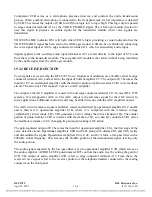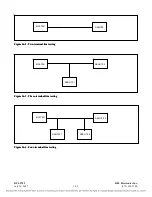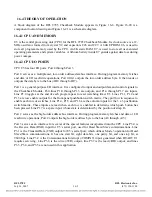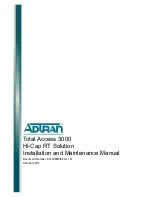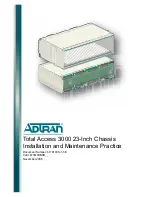
15.2
SPECIFICATIONS
As of the date this manual was published, the following specifications apply to the all RFL 9785 Voice
Modules. Because all RFL products undergo constant refinement and improvement, these
specifications are subject to change without notice.
Dynamic Range:
30 dB.
Input Signal:
See Figure 15-2.
Frequency Response:
Approximately 300Hz to 3Khz.
a. Without audio modulation.
RFL 9785
RFL Electronics Inc.
April 25, 2005
15-2
(973) 334-3100
3-WATT CARRIER
NO AUDIO = 6
±
0.25 UNITS
SWEEP
≅
250 ms/cm
3-WATT CARRIER
30% AUDIO MOD =
2
±
0.25 UNITS
SWEEP
≅
250 ms/cm
4
0
4
4
0
4
b. With 30- percent modulation
Figure 15-2. Input signal from RL 9785 transmitter module
15.3
THEORY OF OPERATION
The RFL 9785 Voice Module contains a transmitter section, a receiver section, and a call tone circuit.
A block diagram of the Voice Module appears in Figure 15-3.
15.3.1
TRANSMITTER SECTION
The transmitter section accepts voice signals generated by the carbon microphone in a telephone-type
handset and prepares them for use in modulating the output carrier of the RFL 9785. The handset is
connected to a mating jack on the front of the chassis, or directly wired to the rear of the chassis. It is
routed to the voice module via the mother board on connector pins A24 (ground) and A25. Transistor
Q2 provides the current necessary to operate the carbon microphone, which will vary between 15 and
20 mA. The signal generated by the microphone is fed to operational amplifier U5A, which serves as a
high-pass filter with a 250-Hz cutoff frequency. The signal then passes to U5C, an operational
amplifier with a diode bridge (CR7 through CR10) and Zener diode CR11 in its feedback circuit. U5C
acts as a limiter, holding the peak signal amplitude to about 2.4 volts. This prevents overmodulation of
the RFL 9785’s carrier signal, which could be interpreted by the receiving station as a failure.








